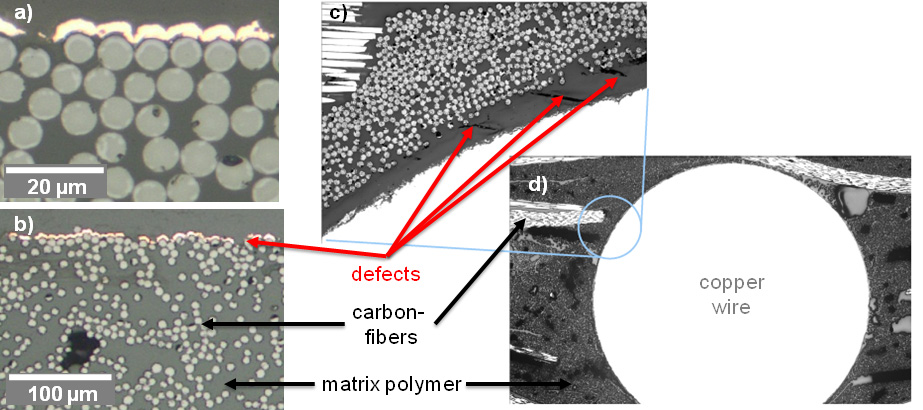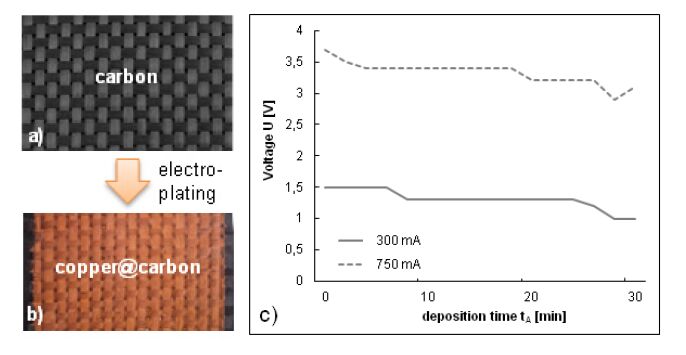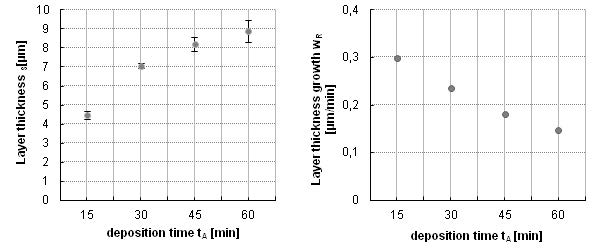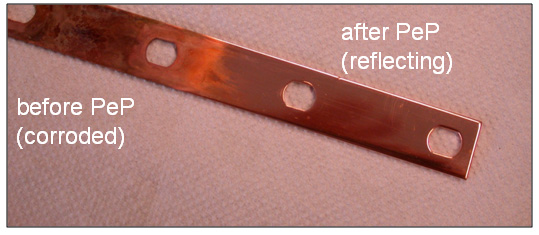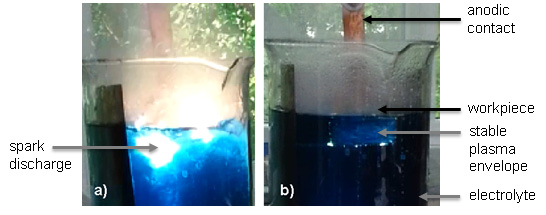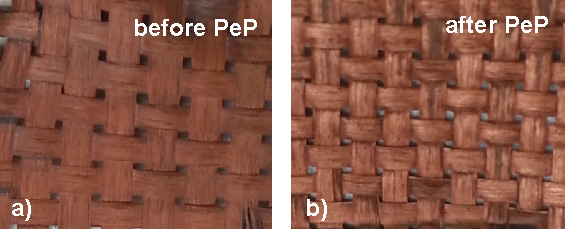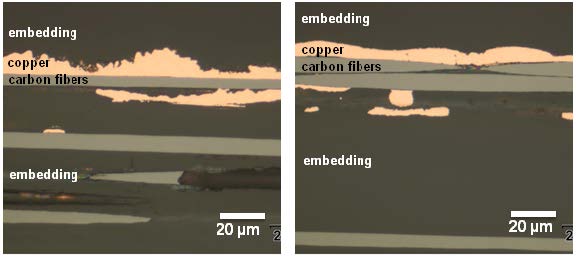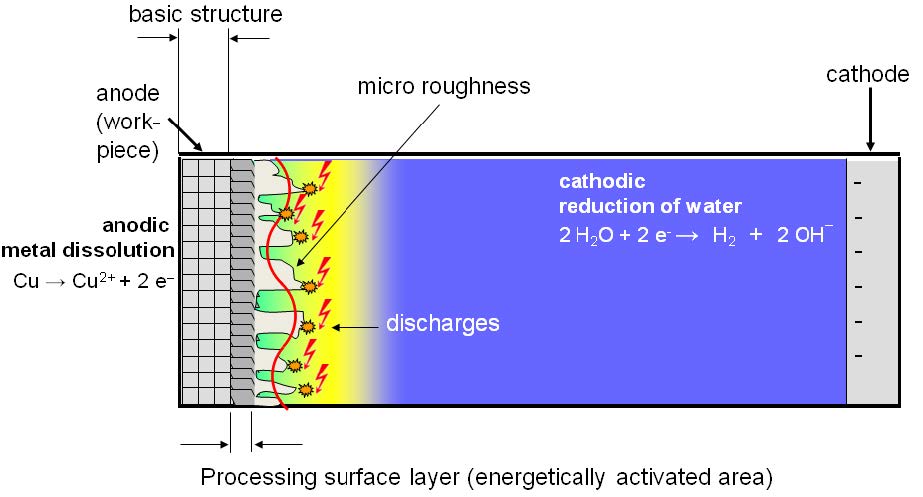1. Introduction
Due to an increased use of carbon-fiber-reinforced polymers (CFRPs) for the reduction of energy consumption in many applications, condition monitoring of these lightweight structures is of increasing importance [1]. Furthermore, the integration of microelectronic components into CFRP structures allows for its functionalization by sensors, actuators and electronics, and thus, for further improvement in terms of performance and functionality [2]. Therefore, innovative interconnection and interface technologies are required. Current research activities are concerning “smart” textile lightweight structures and systems for the integration of sensing and actuation functionalities, power supply and communication [4]. The embedding of active elements requires a reliable connection to the energy system and data interfaces. In recent articles, several strategies are described (scheme 1). On the one hand, CFRPs were directly metalized at the surface (scheme 1a) [3]. On the other hand, metal wires (scheme 1b) [5] or metalized carbon fibers (scheme 1c) [6,7,8] were incorporated into CFRPs.
A coating procedure at the CFRP’s surface enhances the electrical and thermal conductivity as well as adhesion and permeability properties. Plating at CFRP obviates the need for time consuming pre-treatment steps and the use of hazardous chemicals like acids, cyanides and formaldehyde [3,9]. Furthermore, the metal layer is exposed to the environment, which can cause corrosion and weaken the long-term stability of the adhesion of the polymer/copper interface (Fig.1a-b) [9].
Incorporated metal wires also enhance properties like electrical and thermal conductivity of CFRPs. The wires are structurally integrated and no additional chemicals are necessary to create functional CFRPs [5]. However, the comparatively thick metal wires lead to inhomogeneities in the CFRP structure. Those jumps of mechanical properties forward vulnerabilities and cause premature failure of CFRP components. In this work, we describe an approach to reduce process steps (e.g. embroidering of additional conductive wires) and structural weak points.
Metalized carbon fibers have a similar size range and textile properties compared to usual reinforced fibers. The production of metalized carbon fibers by means of electroplating is economically and environmentally friendly. Up to this point, the carbon fiber rovings, which consist of approximately 3000 individual fibers, have been electroplated with zinc, tin, copper and nickel (Figure 2). Only electrolytes that contain no cyanide have been used in order to guarantee environmental friendliness [6,7,8]. The thickness of these metal coatings can be adapted to meet individual requirements by adjusting the appropriate process parameters [7].
In the case of copper, the throwing power of the electrolyte was determined using a Haring-Blum cell and amounted up to 75%. The high throwing power also correlates with the penetration depth of the electrolyte, reaching almost 100%. The coating process shows a high current yield. Copper was chosen to provide a powerful and reliable connection to the sensor system, since copper is a solderable, ductile metal and because copper-coated carbon fibers even exceed the electrical conductivity of pure nickel (16.2 106 S m-1) [7].
To solder copperized carbon fibers for interconnecting microelectronic components requires a pre-treatment step using a flux agent because the surface is primarily in the Cu(l) oxidation state. The choice of flux agent is very difficult. Sensitive flux agents like colophonium work very slowly and are not suitable for mass production [10]. Fast activating flux agents consist of aggressive chemicals like hydrochloric acid, phosphoric acid, etc. and damage the polymer component of the CFRP. Until now, no flux could be found for the activation of the copper surface which fulfills all requirements. Thus, an alternative procedure enabling the activation of the copper surface in a fast manner has to be developed. Ideally, the procedure should inhibit the formation of Cu-oxide without changing any other property.
Our approach is to apply the procedure of plasma electrolytic polishing (PeP) to thin electroplated copper layers of carbon fibers. PeP is a technology to structure surfaces of metallic materials. Electrolytic, plasma and hydrothermal processes take place, leading to a drastic reduction of roughness down to 0.01 µm Ra, an increase of gloss and a change of surface properties. Compared to already established processes (e.g. electropolishing), non-toxic electrolytes can be used, and the temperature at the workpiece surface will not exceed 120°C. Furthermore, the processing time is much smaller. For each workpiece material composition, a specially designed electrolyte has to be used in order to achieve beneficial results [11,12,13,14,15,16,17,18].
2. Materials and Method
2.1. Materials and Process Description
2.1.1. Electroplating of carbon fibers
Carbon fiber woven fabrics of the type Aero 160 (R&G Verbundwerkstoffe GmbH) containing carbon fiber rovings of the type HTA 40 E 13 3 K (Toho Teijin Tenax) were used for electroplating experiments. The woven fabric was cut into segments of approximately 50 mm × 120 mm and fixed in a polypropylene holder. Desizing was carried out by immersing the woven fabric in acetone for 10 minutes and washing with ethanol for 3 times. The woven fabric was clamped between two steel sheets in order to contact the woven fabric electrically. The copper anodes were purchased from Galva-Metall GmbH. The anodes consist of electrolytic copper material with a copper content higher than 99.99%.
The prepared substrates were immersed in a complexed alkaline copper sulfate electrolyte. The distance between the cathode and the two surrounding anodes were 4.5 cm each. The samples for plasma electrolytic polishing were produced by electrodeposition for 15 minutes at a temperature of 30 °C and a current density of 1 A/dm-1.
Electroplating was done by using a laboratory power supply Beha Uniwat NG 304. For the tempering and the circulation of the electrolyte, a laboratory stirrer IKA C MAG HS was used. The coated fabrics were rinsed after the deposition with distilled water and ethanol. Drying was carried out under vacuum at 60 °C for 4 hours.
2.1.2. Plasma electrolytic polishing
The PeP procedure was described for the first time in 1979 [19]. Although it has many advantages compared to electropolishing, just a few articles have been published in the field of PeP so far, mainly focusing on stainless steel and titanium [11,12,13,14,15,16,17,18]. The machining of other materials remains challenging.
In general, the workpiece is anodically polarized (u = 180-300 V, J = 0.2 A cm-2) and immersed in a material-specific aqueous electrolyte solution (water content ~ 98%). Its conductivity is adjusted to σ = 4-30 S m-1 by the addition of various salts [18] and suitable complexing agents. In addition to the workpiece, there is a cathode electrode placed in the electrolytic cell. The surface ratio between anode and cathode is selected to be greater than 1:10. The ratio is necessary to ensure the required current density for plasma formation at the anode surface. The relationship between current density J and applied potential u must be set to adjust the process window to the electro-hydrodynamic area of the PeP process. Caused by the process conditions, a vapor skin is formed which completely surrounds the workpiece. This plasma layer is established, leading, in combination with electrochemical reactions such as (anodic) metal dissolution, (anodic) oxide formation, hydrogen formation and alkalization as well as plasma reactions to a removal of surface peaks. The vapor skin is responsible for the process surface temperature not exceeding the electrolyte boiling temperature; hence, during the process, the workpiece reaches a maximum temperature of ϑ ≤ 120 °C. At the end of the PeP process, it is necessary to clean the parts from residues of the electrolyte solution (e.g. by washing with ethanol) and to dry them subsequently.
2.2. Characterization
To analyze the metal layers, metallographic cross-sections were cut. The prepared samples were examined via the optical microscope Olympus GX51 with a camera XC30 from Olympus.
3. Results
3.1. Copperized carbon fiber woven fabric
A carbon fiber woven fabric was coated by electroplating. The positive result can be observed by the change of appearance. The coating process can be analyzed by plotting a voltage curve during the copper deposition (Figure 3).
The voltage of the copper deposition at 300 mA falls gradually over time, starting at a voltage of 1.5 V, to 1.0 V after 30 minutes. Noticeable here are the constant voltage values ranging from 8min to 24 min. A similar curve is reflected in the deposition of copper on carbon fiber fabrics at 750 mA. At this, the voltage is constant at values of 3.4 V in the range of 4 min to 18 minutes. However, the deposition time was varied up to 60 minutes. The layer thickness and the layer thickness growth were measured according to different coating periods (Fig.4).
After 15 minutes of copper deposition, the layer thickness amounts to 4.4 µm. The layer thickness increases to 7 µm after 30 minutes, to 8.1 µm after 45 minutes and 8.9 µm after 60 minutes. Furthermore, a yield of 1.45 g to 1.55 g of copper per hour was determined by weighing the sample. The highest layer thickness growth amounts to 0.30 µm min-1 after 15 minutes of deposition time. The value decreases from 0.22 µm min-1 (30 min), to 0.19 µm min-1 (45 min) and to 0.15 µm min-1 after 60 minutes.
3.2. PeP of copper
PeP was transferred to copper material according to recent studies [18]. In the first steps, the adapted electrolyte was tested on pure, thin copper sheets. After the workpiece was connected to the energy supply and immersed into the electrolyte, a stable plasma envelope formed. The effect of PeP is clearly visible over the whole length of the immersion depth. The corroded surface of the copper sheets can be polished in a short time (30 s-120 s). After PeP, the corroded layer is completely removed and the gloss greatly increased so that the part is reflecting (Figure 5).
3.3. PeP of copperized carbon fiber woven fabric
In the first trials of using PeP on woven fabric, the process parameters were adapted from preliminary experiments with copper sheets. However, it was not possible to form a stable plasma envelope. Despite an optimized electrolyte composition and the conditioning of the hydrochemical parameters, spark discharging occurred (Figure 6a).
After the optimization of the electrical setup, it was possible to process the copper coated carbon fiber woven fabric (Figure 6b). The workpiece is surrounded by a stable plasma envelope after dipping it into the aqueous electrolyte. As result of the PeP process, an increase of gloss can be observed. In comparison to the dull initial state, a shiny sample is obtained after PeP (Figure 7).
The effect of PeP is also visible in microscopic images of prepared cross sections. In the initial state, the surface thickness is distributed in a range from 2.8 µm to 12.2 µm (Figure 8a). Furthermore, the shape of the copper layer is irregular.
The surface of the metal layer is smoothed to a homogeneous shape after treating the copperized surface by PeP. The layer thickness is distributed in a range from 4.1 µm to 6.0 µm (Figure 8b).
4. Discussion
Electroplating of carbon fiber woven fabrics leads to closed copper layers on the carbon fibers’ surface. With an increasing current density, the potential between anode and cathode increases as well (Figure 3a). The decreasing voltage during the deposition experiments is attributable to the function of the electrical resistance. Since the coating process was carried out galvanostatically, a change in the resistance leads to a change in the potential (it is assumed that the fiber-electrolyte interface is an ohmic resistance). At the beginning, there is no metal on the carbon fibers’ surface. The resistance between fiber and electrolyte is therefore comparably high. The deposition of first metal layers reduces the resistance between fibers and electrolyte. The faster first metal layers form, the faster the voltage decreases. If the fibers are completely covered by copper, the resistance falls in linear proportion to a low gradient. The decreasing resistance is caused by the increasing current conductivity of the growing metal layer.
Similar to other substrates, it is possible to adjust the thickness of the electroplated layers by the deposition time. Electroplating results in thicker layers after longer deposition times. The growth rate of the layer increases in dependence of the deposition time. A reason for this behavior is the formation of dendrites. This metallic material is different from a homogeneous layer. It is considered that parts of those dendrites are removed during the procedure and are not detected as coating.
PeP was carried out successfully after optimizing the electrolyte composition and the electrical parameters. An optimal value with stable plasma-electrochemical processes was found at around 300V. In this case, a uniform metal removal creates a homogeneously smoothened surface. With increasing voltage, electro-thermal processes gain influence, leading to spark discharge and an uncontrollable process (cf. Figure 6a).
In principle, according to the theoretical concept, the PeP process works at thin copper layers. The characteristics of the PeP process are a comparatively low current density of JPeP ≈ 0.2 A/cm² and a calm process. Within the process, electrochemical reactions such as (anodic) copper dissolution, as well as oxidation processes of copper take place. At the cathode, water is reduced to hydrogen and the electrolyte alkalizes due to the formation of hydroxyl ions. In addition, plasma reactions such as an ionization of the steam hull and hydrothermal reactions such as metal dissolution due to the metal-water reaction can take place (Figure 9). Thus, the roughness of the copper surface decreases, while the gloss increases.
5. Conclusion
The surface of a carbon fiber woven fabric was copperized by means of electroplating. The thickness of the copper layer can be adjusted by deposition parameters such as time and current density as known from other electroplating systems. Further, plasma electrolytic polishing was transferred to copper and finally applied to copperized carbon fibers. The surface layer is smoothed after the PeP process, and the gloss increases. In doing so, the composition of the copper layer is nearly unchanged, and oxide formation is inhibited. The combination of metallizing carbon fibers and the PeP process is a strong tool to create a new generation of functional lightweight materials. Structure property relationships between surface treatment parameters and the shear strength of joint samples are currently under investigation.
Acknowledgments
The authors would like to thank Thomas Mäder and Wolfgang Adamitzki for the fruitful discussions and experimental hints as well as Sylvia Neumann and Uwe Köppler for the experimental support. Moreover, the financial support of the European Social Fund (ESF), and the BMWi (EXIST-Forschungstransfer - inca-fiber: 03EFE SN080 and EuroNorm-Projekt: MF 110095) is greatly acknowledged.
Conflict of Interest
The manuscript describes original research. There is no conflict of interest related to this document.










 DownLoad:
DownLoad: 